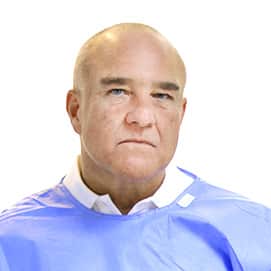About the program
The life of most modern people rushes at a frantic pace. With a significant decrease in physical activity, neuropsychic stress increased exorbitantly. But the nervous and cardiovascular systems are closely interconnected. Any strong emotion causes changes in the blood supply to the organs, and, first of all, the heart suffers from this.
According to statistics, out of 100 people who died due to diseases of the cardiovascular system, 36 had never complained of heart problems before. In the risk group in the first place are men over 40 years old, especially those whose work is associated with a high level of responsibility and constant stress.
Therefore, doctors recommend that men at this age undergo a preventive examination of the cardiovascular system, regardless of the presence of symptoms. Moreover, modern technologies make it possible to do this quickly and painlessly.
Program "Cardiology"
Introductory conversation with the head of the dermatology clinic (history taking, final approval of the examination program and differential diagnosis)
Comprehensive Blood Tests
- clinical blood test with leukocyte formula
- biochemical blood test (liver and kidney tests, carbohydrate and lipid metabolism, proteins and protein fractions, electrolytes, blood clotting parameters)
- blood test for thyroid hormones (to assess its function)
- blood test for pancreatic hormones (for the diagnosis of diabetes mellitus at the preclinical stage, as well as diseases of the pancreas)
- for men: test for prostate specific antigen (PSA)secreted by cells of the prostate gland (to diagnose prostate cancer and monitor the treatment of existing prostate disease)
Echocardiography (EchoCG)
What is this?
Non-invasive study by ultrasound diagnostics of all structures of the heart in the process of its work.
For what?
Using this method, the wall thickness, the volume of the heart cavities, the condition and functioning of the valvular apparatus, the contractile function of the heart muscle are determined, intracardiac hemodynamics, blood flow parameters in the heart chambers are examined, intracardiac thrombi, neoplasms, heart aneurysm, heart defects are detected.
Doppler Ultrasound Scan of Neck Vessels
What is this?
A combination of ultrasound diagnostics and color coding of moving blood with a two-dimensional image of the lumen and vessel walls.
For what?
Ultrasound and DS of extracranial and intracranial vessels helps to identify obstructions to blood flow, arterial and venous aneurysms, occlusion of the vessels of the base of the brain and vertebral artery, to assess the degree of stenosis of the carotid arteries and atherosclerotic lesions, to determine the spasm of the cerebral arteries.
USDG neck vessels is carried out to assess the condition of the walls of blood vessels and analyze blood flow. Thus, the thickness of the internal vascular wall is determined, circulatory disorders in the carotid arteries, zones of thrombosis or vascular compression, as well as the presence of atherosclerotic deposits are detected.
Ultrasound Scan of the Thyroid Gland and Soft Tissues of the Neck
What is this?
A combination of ultrasound diagnostics and color coding of moving blood with a two-dimensional image of the lumen and vessel walls.
For what?
Ultrasound and DS of extracranial and intracranial vessels helps to identify obstructions to blood flow, arterial and venous aneurysms, occlusion of the vessels of the base of the brain and vertebral artery, to assess the degree of stenosis of the carotid arteries and atherosclerotic lesions, to determine the spasm of the cerebral arteries.
UZDG and DS neck vessels is carried out to assess the condition of the walls of blood vessels and analyze blood flow. Thus, the thickness of the internal vascular wall is determined, circulatory disorders in the carotid arteries, zones of thrombosis or vascular compression, as well as the presence of atherosclerotic deposits are detected.
What is this?
Method for studying the heart muscle by recording bioelectrical signals of the heart at rest from the body surface.
For what?
For the diagnosis of cardiac arrhythmias and other pathologies of the heart (cicatricial changes, ischemia, etc.).
Blood Pressure Monitoring
Electrocardiography (ECG) with exercise
What is this?
ECG recording during physical or drug stress on the heart.
For what?
Serves to determine exercise tolerance, detect coronary heart disease in the early stages and heart rhythm disturbances diagnosed only during exercise.
Electrocardiography (ECG) daily
What is this?
A method of continuous electrocardiographic recording performed within 24 hours.
For what?
It is used for diagnosing arrhythmias and the conduction system of the heart, coronary heart disease, assessing the work of a pacemaker, monitoring drug therapy.
24 hour blood pressure monitoring
Pulmonary Function Test
What is this?
A method for studying the function of external respiration, including the measurement of lung volumes, as well as speed indicators of pulmonary ventilation.
For what?
Used to assess the functional state of the respiratory system.
Medical reports of all examinations
Concluding discussion with the chief of the cardiology clinic regarding examination findings, followed by potential treatment prescription if required.
Program "Cardiology Plus"
The program contains all examinations of the basic package "Cardiology". In addition, additionally carried out:
Echocardiography (EchoCG) with exercise
What is this?
A type of echocardiography in which the condition of the heart muscle is assessed under conditions of physical activity using a bicycle ergometer (special exercise bike).
For what?
It helps to identify changes in the activity of the heart muscle, myocardial ischemia with its subsequent detailing, to determine the pool of the stenotic coronary artery, to assess the viability of the myocardium in the zone of post-infarction damage.
Determination of the ankle-brachial index (ABI)
What is this?
Measurement of systolic blood pressure in the proximal shoulder and in the distal leg on both sides using pneumatic cuffs and a Doppler analyzer.
For what?
To assess the adequacy of arterial blood flow in the lower extremities.
Occlusal plethysmography
What is this?
A method for registering changes in the blood filling of the extremities with an increase in pressure. At the same time, with the help of compression cuffs, an artificial obstruction is created for the venous outflow of blood in order to register the degree of increase in the volume of the limbs.
For what?
To determine the volumetric velocity of blood flow, assess the tone of the veins in order to diagnose varicose veins and occlusive vein diseases, including deep vein thrombosis of the lower extremities and insufficiency of venous valves.
Duration: 2 days


















